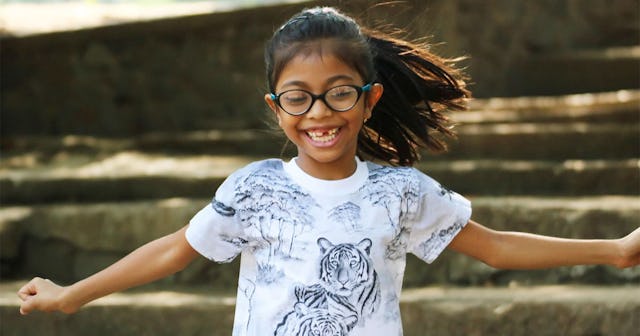15 Eco-Friendly Activities You And Your Kids Can Do From Home (For Free)

Like many of you, I’m stuck in my house with my kids for an indefinite period of time, and though it hasn’t been that long, we’re all starting to go a little bonkers. My kid just barged into my room where I am sitting in bed pecking away at my laptop and did a swan dive onto the mattress while yodeling. At least, I think that horrible screeching sound he made was an attempt at yodeling.
It’s only been a little over a week, but we’ve cleaned the house from top to bottom, installed a badminton net in our backyard, and tried out several new baking recipes. We’ve had movie nights and gone on walks and read books and built with Legos. The kids are currently making their own music video. And yet we are weirdly desperate for original ideas for things to do.
Megan Severson, director of Environment America, came through for us with a ton of creative ideas to build into our homeschooling activities that both break up the monotony and teach our kids to be better environmentalists — all while adhering to social distancing rules. Below are our favorites, divided up by age group.
Quick reminder, though, before we dive in: You do NOT have to keep your kids engaged for eight hours per day. That is not what homeschooling is. These are simply meant to be fun lessons you can build into the time you do spend learning and exploring each day.
For Younger Preschool or Elementary Aged Kids
1. Become energy detectives! Using this guide to reducing energy waste, have your kids explore your house like detectives to identify and make a list of areas where they could reduce energy waste. A few things to look for:
- Are lights turned off when no one is in the room?
- Are windows properly caulked and sealed?
- Are computers and TVs set to go into “sleep” mode rather than “screensaver” mode?
- Do you unplug chargers when not in use?
- Do you wash your clothes with cold water? (90% of a washer’s energy is used heating the water!)
2. Watch videos about the earth, trees, and plants. Afterward, draw pictures of your favorite things.
3. Take a nature walk and collect leaves to make leaf rubbings. Frame and hang!
4. Learn about how animals use camouflage to keep themselves hidden. Play a game of hide-and-seek using what you’ve learned. This one can be taken outside too.
5. Create an environmental scavenger hunt, adapted to your own backyard or local nature park. A few ideas for things to hunt for: Pine cone, green leaf, brown leaf, wildflower, acorn, squirrel, or any birds that are local to your area.
For Older Elementary Aged Kids
6. Reorganize your fridge. Toss anything that has already gone bad, and pull foods that were about to go bad to the front so that they don’t go to waste. Organize what remains in a way that allows everything to be seen so it gets used. (And may as well have them wipe it out while they’re at it!)
7. Make your own kitchen compost bin.
8. Learn about and take a virtual tour of Yellowstone National Park.
9. Learn about glaciers and write a story or about them. If you have vocabulary words sent from school, have your child see if they can build those into their story.
10. Take a virtual dive into our world’s coral reefs, and research why they’re an important part of our ecosystem.
11. Listen to the “Wow in the World” podcast from NPR and have your child write a quick paragraph about the coolest thing they learned.
For Tweens and Teens
12. Calculate your family’s carbon footprint. Older kids can walk through this link and fill in the blanks to get an idea of how much energy your family uses.
13. Identify things around the house that need repairing, and learn how to fix them. Use YouTube as a guide to help you fix things from a loose fence post to wobbly kitchen cabinet doors to broken picture frames. Have a conversation about how repairing what you already have reduces waste.
14. Have your kids create their very own educational video. Using the kind found here, have your kids create and edit their own video asking politicians to make changes that would move our country to renewable energy. Post to social media and tag your elected officials!
15. Calculate how much trash your household puts out each week. Come up with a plan to reduce it by 25% before school resumes (or summer, whichever comes first).
This article was originally published on